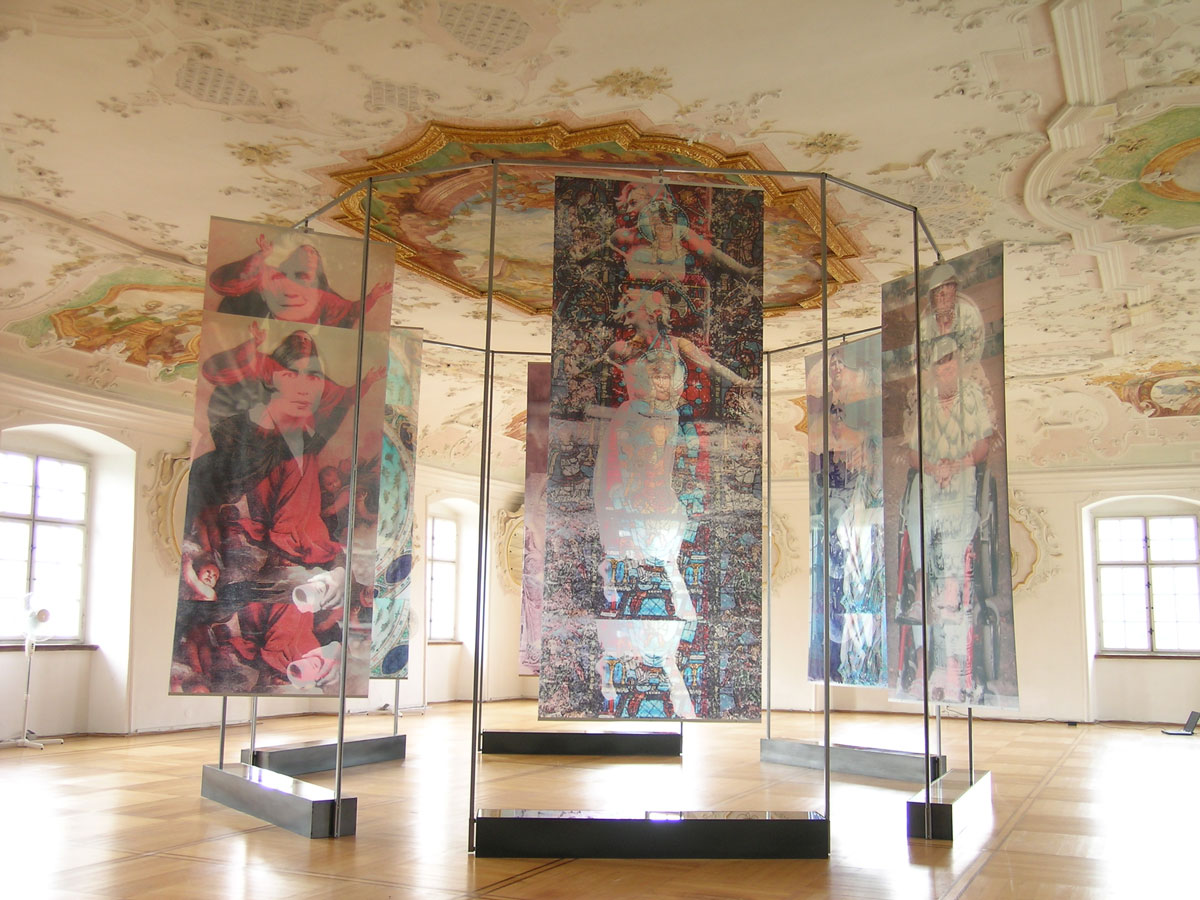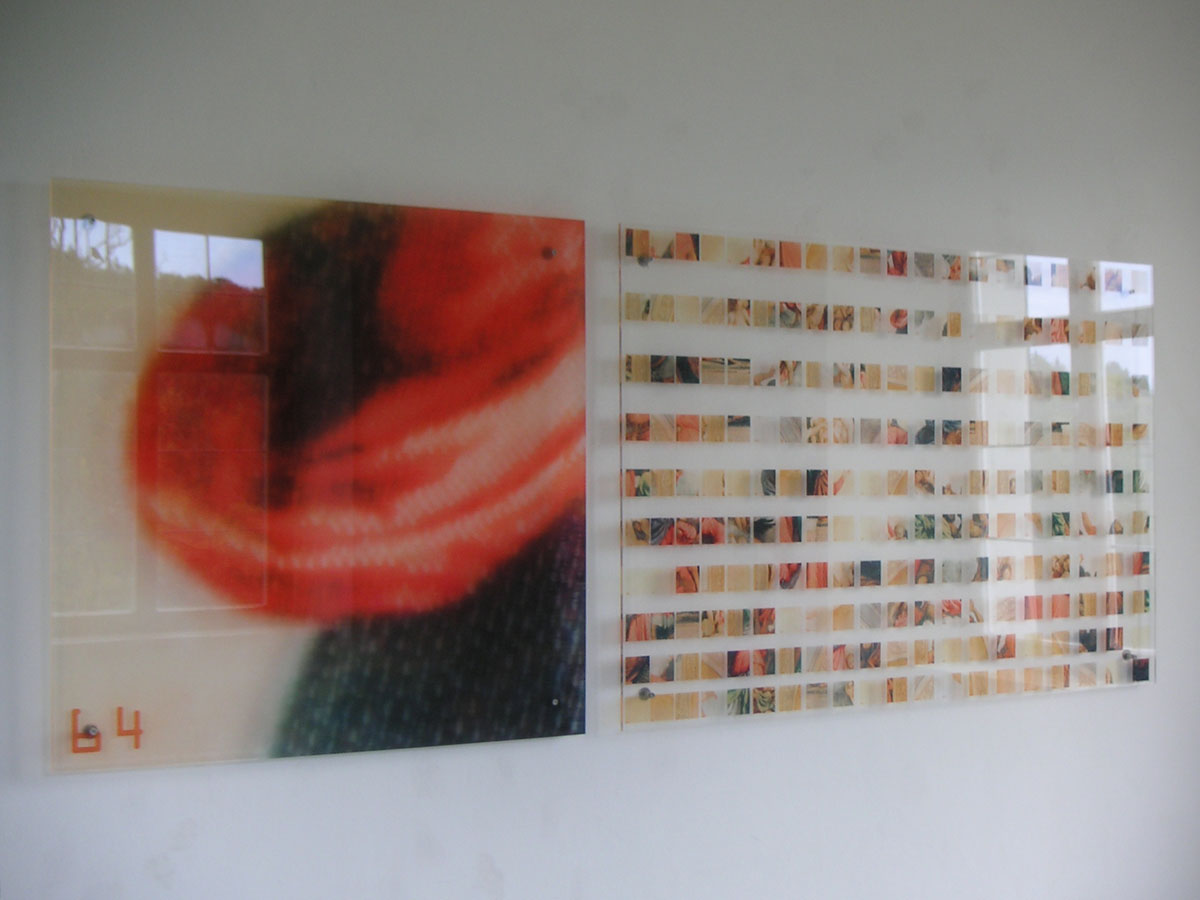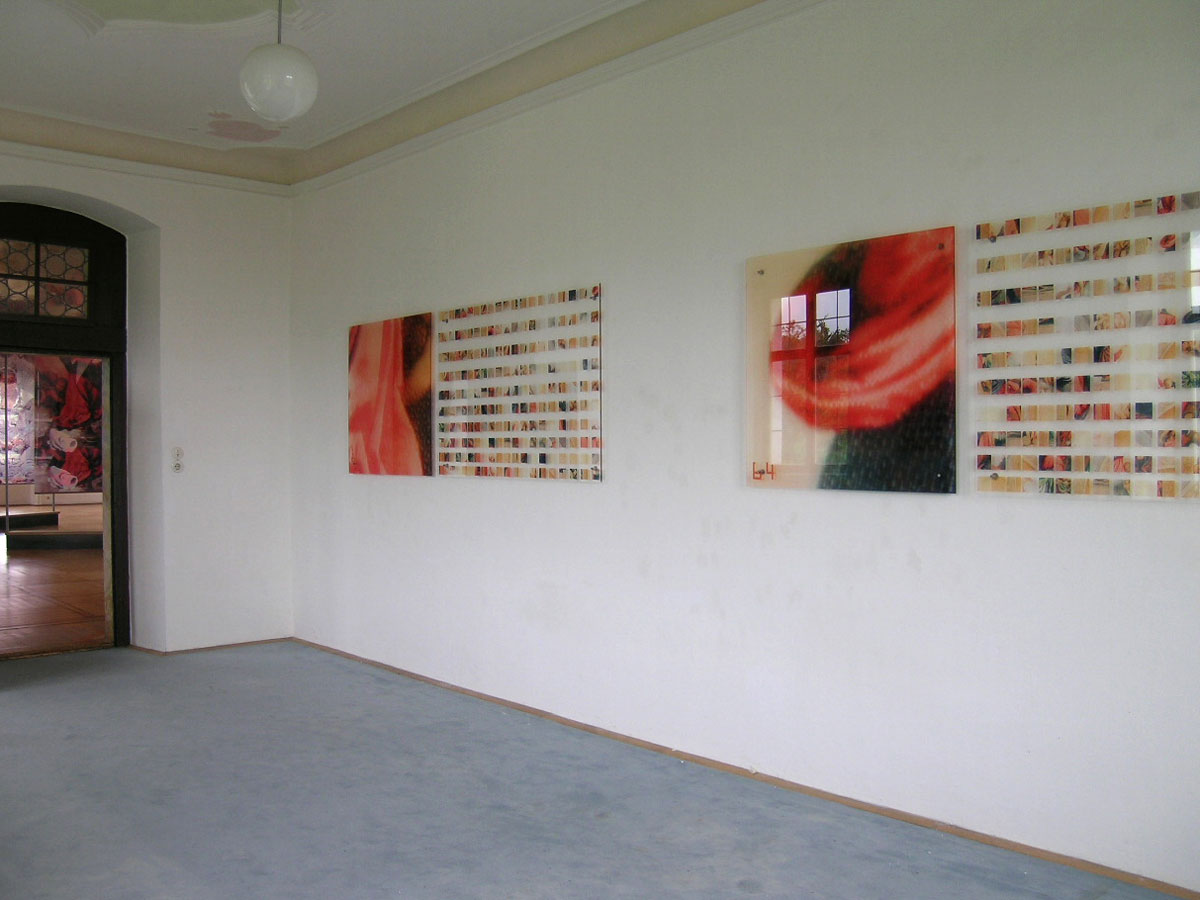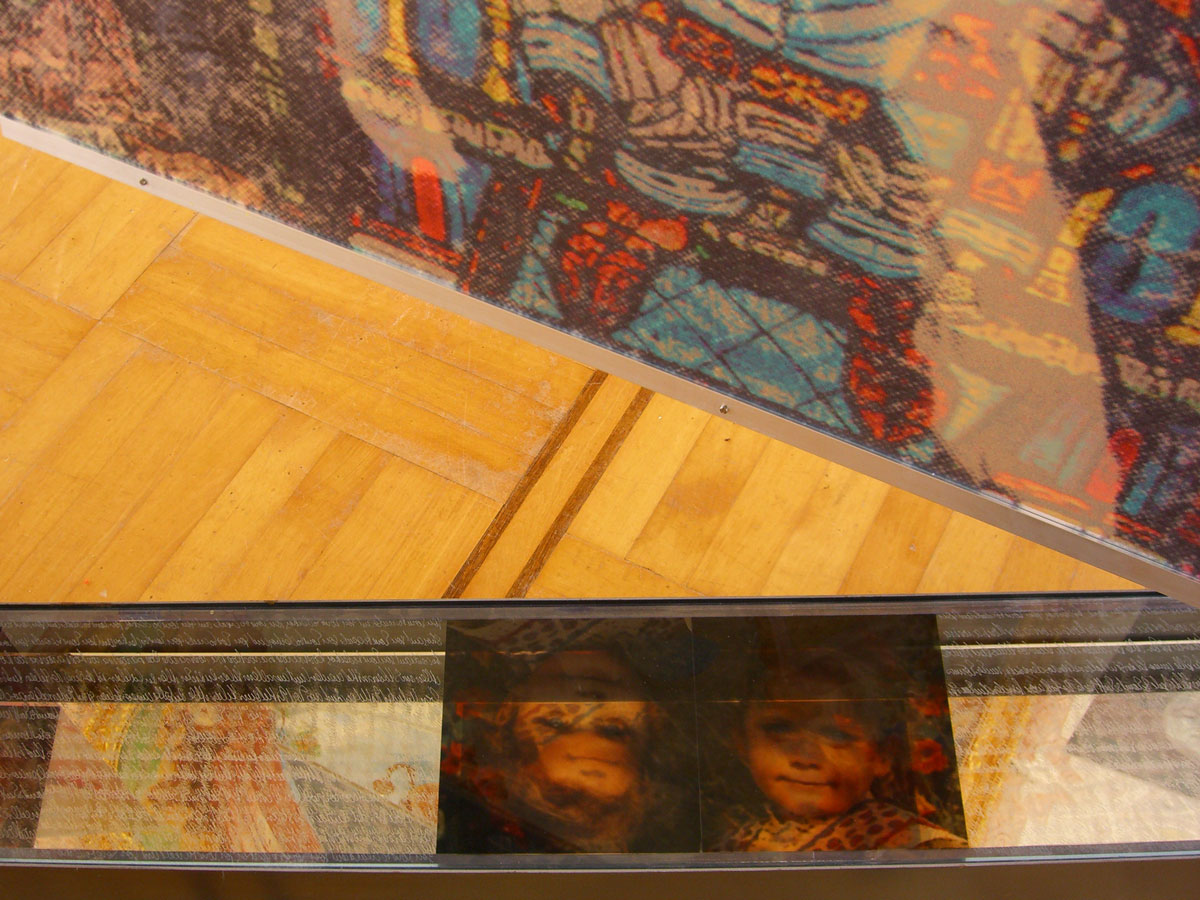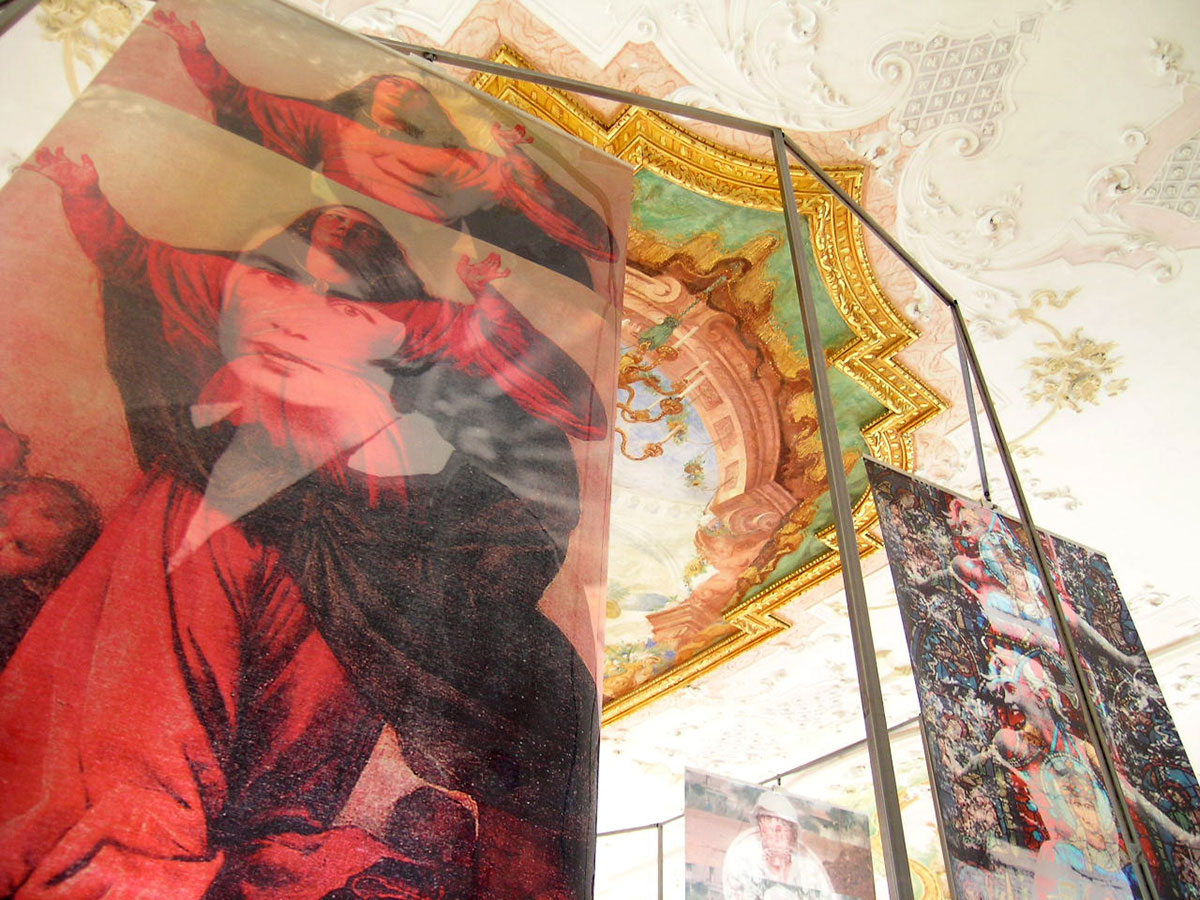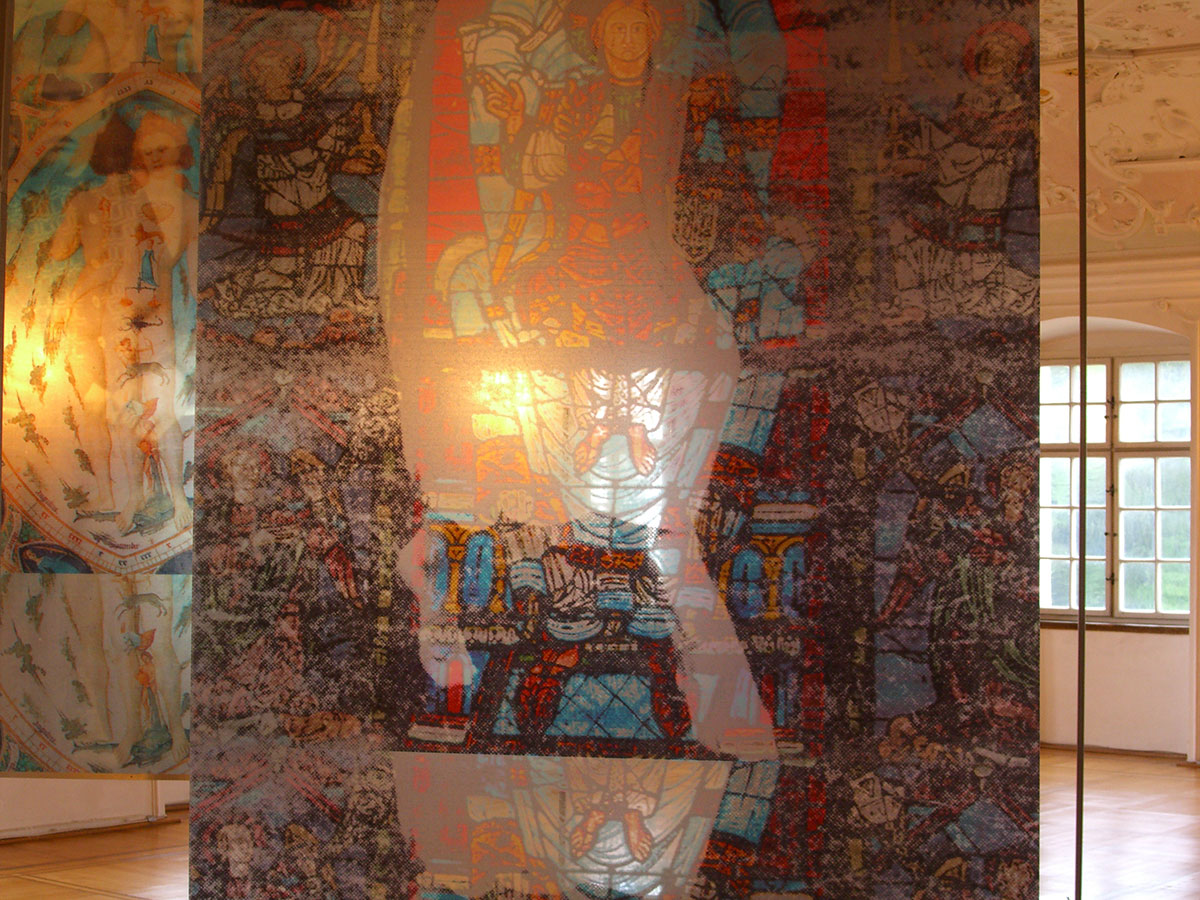Installations and objects
razor-thin stretched between yesterday and tomorrow, and yet must be tuned up high above the standard pitch
2001/2005, Installation, approx. 500 x 500 x 400 cm
6 digital mega prints in movement
digital prints on film, moved by 6 fans
each approx. 300 x 120 cm
6 mirror boxes
Steel, mirror, glass, large slides, engraved text
each approx. 30 x 180 x 30 cm
6 pivotable fans
Spoken text, layered over each other as audio text in the space
Text for the exhibition
In her exhibition in the Mochental Castle gallery, Mariott Stollsteiner shows the extensive installation between05 , and four images from the series interversionen (interversions).
between05 is the further development of an installation concept from 2001, which has now been realised in a new form, especially for the Hubertussaal at Mochental Castle. In a room height, twelve-sided steel structure, six large films are freely suspended, which are set into slow, rotary movements at regular intervals by fans. The construction is freestanding in the room, can be entered, and, due to the rotation of the films, has an ever-changing countenance without a clearly specified location for the observer.
The film panels are printed with complex photo montages, in which Stollsteiner superimposes “icons” of diverse provenance, and intertwines them. Two pictorial spaces meet for dialogue: on the one hand, mythical women – from an ancient sculpture of the Greek fertility goddess Artemis to the Nike of Samothrake, portrayals of the Madonna from Chartres Cathedral, a zodiac Madonna from the book of hours of Duc de Berry, the “Frari-Madonna” by Titian to Marilyn Monroe, and the Australian athlete Cathy Freeman. On the other hand, as biographical “ancestors” of the artist, her own grandmother and two great aunts, whose work as a writer and/or as an organic-dynamic farmer in Egypt, had a strong influence on the artist. Under all of these images, six steel shrines rest on the ground, in which, between glasses and mirrors with engraved texts by Novalis, Rudolf Steiner and Gertrude Stein, a picture of the artist as a child is placed. The cosmos of images is acoustically surrounded by a sound collage of texts and songs, which are spoken by the artist, and like the photo montages, overlap worlds: a Russian “Halleluja” meets “Amazing Grace”, and texts about “love and freedom” from various times and cultures.
between05 is a frame of reference, a space in which near and far persons, familiar and remote cultures come together. Stollsteiner does not mix the elements, but rather creates relationships between them. For her, it is about the spaces that arise between them, and which are the place for critical reflection and new thought.
A dissolution of conventional hierarchical orders, with the aim of awareness of these orders, and trying out new forms of perception, thinking and feeling also happens in the series interversionen, of which four can be seen in this exhibition.
The formulation of transcendence between spirituality and earthly hierarchy is brought into a space in between for reflection, through the abstraction of two altarpieces, in the interversionen: The altarpiece from a church in Bad Waldsee, Upper Swabia, the birthplace of the artist, and Titian’s painting of the Ascension of the Virgin Mary, in Venetian Frari church (also between05 ), from which here the figure of God the Father is removed, as a representative of a paternalistic-hierarchical principle. Stollsteiner completely fragmented these images into 200 parts each, and rearranged them randomly. What can also be presented as a large installation can be seen on printed Perspex panels here, which are structured according to the classic image pattern of the diptych: on the right, you can see a miniature of the field of the 200 fragments, and on the left is an enlargement of one of these “image atoms”.
between05 and the concept of interversionen introduced in the four images are two frames of experience, which makes our interdependency in gender roles, biographical and cultural frames of reference, and diverse thought and value patterns, perceivable to us, in the cosmos of the artist formulated in the work. Mariott Stollsteiner defines the space “in between” as a place of creativity and change, which emerges from dialogue, and the conflict between the own and the external, the individual and its socio-cultural environment, people and their worlds.
Thomas Huber

